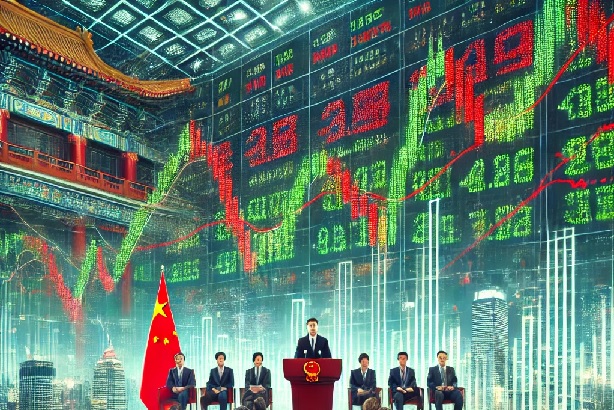
(Photo : China Markets)
China Markets
- China's economy is experiencing a significant slowdown, with the GDP growth rate at 4.6% in Q3 2024.
- The property sector's downturn and weak domestic demand are major concerns, impacting businesses like EssilorLuxottica.
- In response, Chinese authorities have increased policy stimulus and monetary support measures, aiming to achieve a 5% full-year growth target.
- The effectiveness of these measures in revitalizing growth and addressing structural weaknesses remains to be seen, drawing parallels to the Asian Financial Crisis of 1997.
China's economy, the world's second-largest, is currently grappling with a significant slowdown. The third quarter of 2024 marked the slowest growth since early 2023, with the GDP growth rate standing at 4.6%. This figure fell short of the 4.7% pace in the second quarter.
Bruce Pang, Chief Economist at JLL, suggests that this slowdown aligns with market expectations, given the weak domestic demand, a struggling housing market, and slowing export growth.
The property sector, a significant pillar of the Chinese economy, is a major concern for Beijing. With 70% of Chinese household wealth held in real estate, consumers have been cautious about spending.
This frail consumption has impacted many businesses, including major Franco-Italian eyewear maker EssilorLuxottica, which reported missing third quarter revenue expectations due to weak consumer demand in China.
The property sector's downturn is also reflected in the house price index, which slid 5.7% year-on-year, marking the fastest pace of decline since May 2015.
China's Response to Economic Challenges
In response to these challenges, Chinese authorities have ramped up policy stimulus since late September. The central bank announced the most aggressive monetary support measures since the COVID-19 pandemic to support the property and stock markets.
However, the details of the overall size of the stimulus package and a clear plan to reignite broader growth are still awaited by investors.
Despite the economic slowdown, officials have expressed confidence in achieving the government's full-year growth target of around 5%, underpinned by further policy support and another cut to the amount banks must hold in reserve.
Sheng Laiyun, deputy head of China's statistics bureau, stated that the economy in the fourth quarter is expected to continue the stabilization and recovery trend that occurred in September.
However, the economy's challenges are not limited to the domestic front. The export sector, a lone bright spot in the economy, has also started to show signs of strain, with shipment growth slowing sharply last month.
Historical Parallels and Future Outlook
The current economic situation in China bears some resemblance to the Asian Financial Crisis of 1997. During that period, many Asian countries experienced a financial crisis due to a real estate bubble and weak domestic demand.
The Chinese government's response to the current situation, including the implementation of stimulus measures and monetary support, is reminiscent of the strategies employed by various Asian governments during the 1997 crisis.









